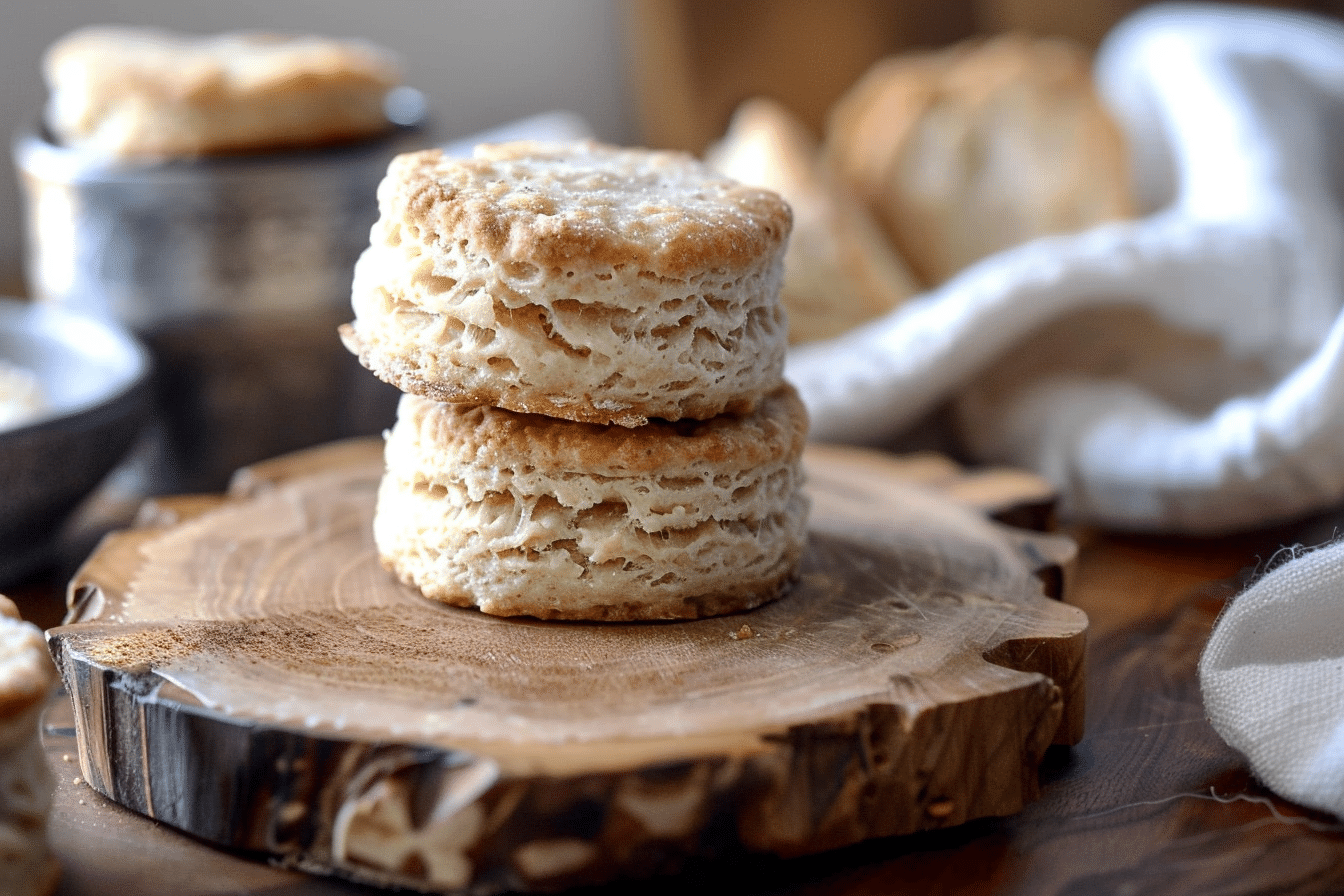Gluten free biscuit recipe should do more than “make do”—it should deliver the same buttery, flaky joy of the original. If you’ve ever struggled to find one that works, you’re not alone. In this article, we’ll break down exactly how to make a gluten free biscuit recipe that rises right, tastes rich, and satisfies like the real thing. I’ll also share tips on why some gluten-free baking fails and how to fix it. Let’s start where all the best recipes do—with a real kitchen story and the reason this recipe became one of my personal favorites.
PART 1: My Story & What Makes a Great Gluten Free Biscuit
From South London Crumbs to American Comfort Food
My love for biscuits goes way back, long before I needed a gluten free biscuit recipe. I’m Emma, and I started cooking in a tiny kitchen in South London with mismatched tins and hand-me-down recipes. After moving to the U.S., a gluten sensitivity forced me to rethink everything I knew about baking. My first attempt at a gluten free biscuit recipe? A flat, grainy disaster. But I wasn’t ready to give up on the comfort of warm, buttery biscuits.
Determined, I started experimenting—mixing, folding, failing, and trying again. I scribbled notes in my secondhand notebook, tested different gluten-free flour blends, and eventually cracked the code. The result? A gluten free biscuit recipe that delivers every time.
What Makes a Gluten Free Biscuit Actually Work?
The secret to a successful gluten free biscuit recipe lies in replicating what gluten does—create structure and hold in moisture. Since we can’t rely on wheat flour, we use smart swaps like a mix of rice flour, tapioca starch, and a touch of xanthan gum. This combination mimics gluten’s stretch while keeping the biscuit tender.
Cold fat (like butter) is key for flakiness, and buttermilk adds tang and rise. The dough should be handled gently and not overmixed—another trick I learned after baking more “hockey pucks” than I care to admit.
For more successful gluten-free ideas, try our gluten-free banana muffins or this cozy gluten free cornbread. Both are reader-tested and foolproof.
Print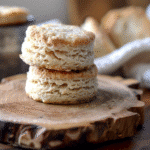
Gluten Free Biscuit Recipe That Actually Works (And Tastes Like the Real Thing)
- Total Time: 30 minutes
- Yield: 8 biscuits 1x
Description
This gluten free biscuit recipe delivers flakey, buttery results with minimal effort. Perfect for breakfast, snacks, or savory sides.
Ingredients
2 cups gluten-free all-purpose flour (with xanthan gum)
1 tbsp baking powder
1/4 tsp baking soda
1/2 tsp salt
6 tbsp cold unsalted butter (cubed)
3/4 cup cold buttermilk
1 tsp honey (optional)
Instructions
1. Preheat oven to 425°F (220°C) and line a baking sheet with parchment.
2. In a bowl, whisk flour, baking powder, baking soda, and salt.
3. Cut in cold butter using a pastry cutter or fingers until crumbly.
4. Add buttermilk and honey. Stir until dough just comes together.
5. Turn onto floured surface. Pat into a 1-inch thick round.
6. Cut with biscuit cutter. Place on baking sheet.
7. Bake 12–15 minutes or until golden brown.
8. Cool slightly before serving.
Notes
For dairy-free: substitute butter with vegan butter and use almond milk + 1 tsp lemon juice.
Freeze unbaked biscuits for later. Add 3–5 minutes to bake time from frozen.
- Prep Time: 15 minutes
- Cook Time: 15 minutes
- Category: Gluten Free
- Method: Baking
- Cuisine: American
Nutrition
- Serving Size: 1 biscuit
- Calories: 185
- Sugar: 1g
- Sodium: 320mg
- Fat: 9g
- Saturated Fat: 5g
- Unsaturated Fat: 3g
- Trans Fat: 0g
- Carbohydrates: 22g
- Fiber: 2g
- Protein: 2g
- Cholesterol: 20mg
Keywords: gluten free biscuit recipe, easy gluten free biscuits, biscuits without gluten
PART 2: Variations and Must-Know Techniques for the Perfect Gluten Free Biscuit Recipe
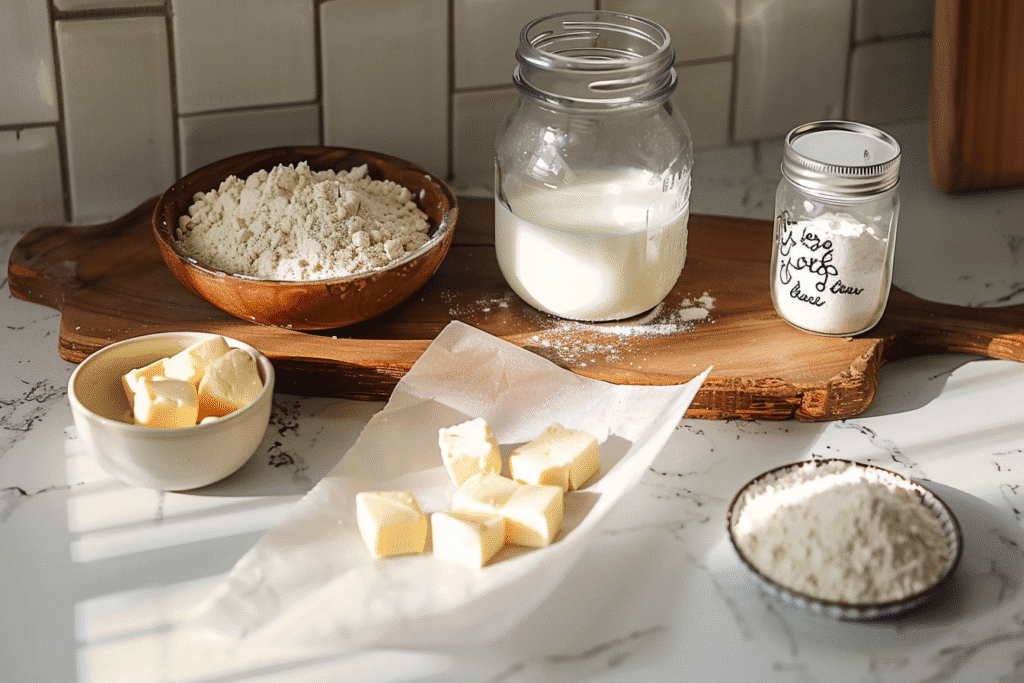
Flour Power: Choosing the Right Blend for Your Gluten Free Biscuit Recipe
One of the biggest challenges in getting a gluten free biscuit recipe just right is picking a flour blend that performs well. Not all gluten-free flours are created equal. The best blends combine structure, moisture retention, and a light crumb. I’ve tested dozens, and I’ve found that a mix of white rice flour, potato starch, and tapioca flour offers the closest texture to classic Southern biscuits.
A bit of sorghum flour can add warmth and depth, while xanthan gum (just half a teaspoon per cup of flour) mimics gluten’s elasticity. If you’re short on time, you can also use a high-quality store-bought blend like Cup4Cup or King Arthur’s gluten-free mix—just make sure it includes a binder.
For more on building perfect flour blends, check out our gluten free baking basics and this gluten-free chocolate chip cookie recipe that’s earned repeat requests in my house.
Want more gluten-free goodness? Check out our easy gluten free biscuit recipe, browse tasty gluten free chicken recipes, or explore gluten free dairy free recipes for allergy-friendly meals. Plant-based? You’ll love our vegan gluten free recipes.
Tips for Making Biscuits That Rise and Fluff Up Beautifully
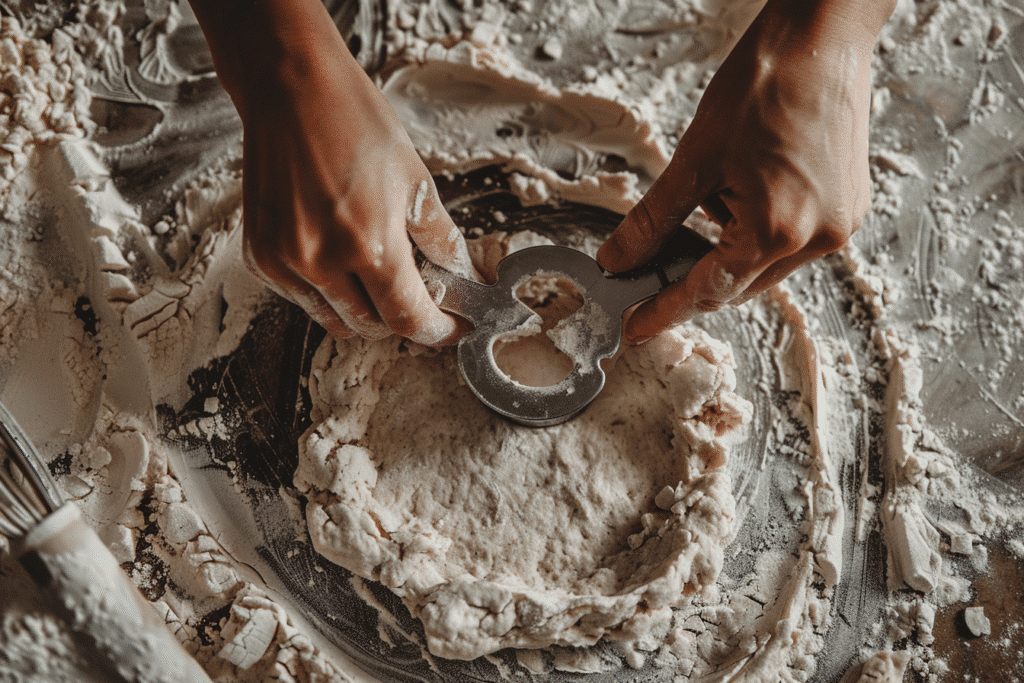
A flat biscuit is heartbreaking. But here’s why your gluten free biscuit recipe might be falling short: warm ingredients, overmixing, and low oven heat are the biggest culprits. The butter must be cold—icy, even. This creates steam when it hits the oven, lifting the dough from within.
Another key: use fresh baking powder. Old leavening agents are sneaky saboteurs. For every 2 cups of gluten-free flour, use 1 tablespoon of baking powder and ¼ teaspoon of baking soda (if using buttermilk). Don’t skip chilling the dough before baking, either—it helps firm up the fat and control spread.
Keep your cuts sharp—literally. Use a biscuit cutter and press straight down without twisting, or you’ll seal the edges and block the rise. For extra fluff, stack and fold the dough gently like you would with puff pastry.
If you’re new to gluten-free baking, our guide to troubleshooting gluten free breads is packed with clear fixes and easy swaps.
PART 3: How to Customize and Store Your Gluten Free Biscuit Recipe
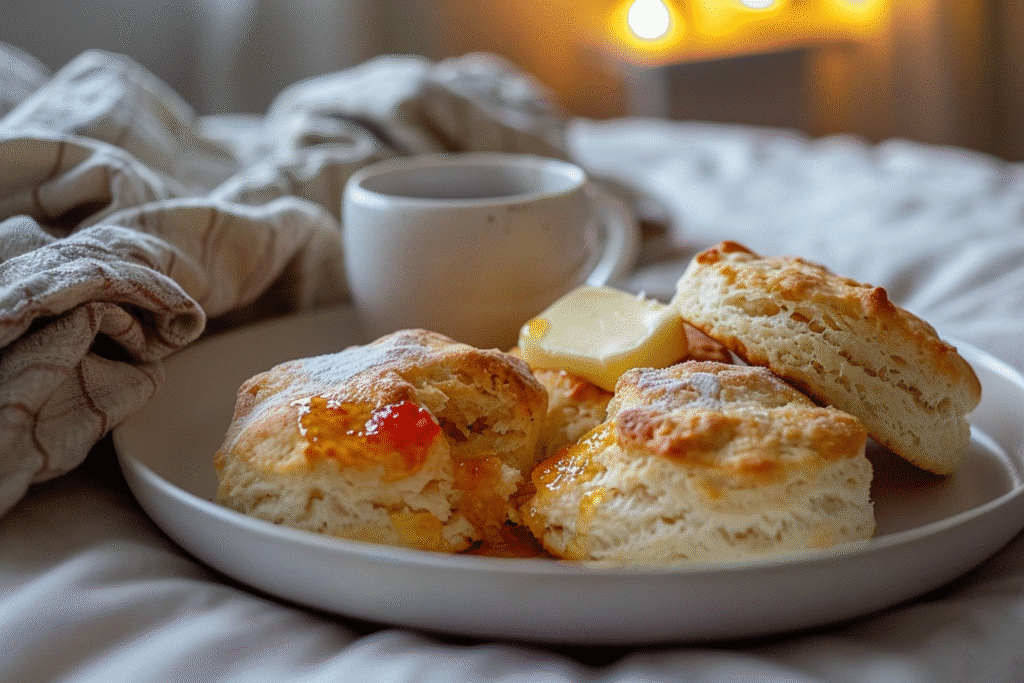
From Sweet to Savory: Ways to Customize a Gluten Free Biscuit Recipe
Once you’ve nailed a base gluten free biscuit recipe, the sky’s the limit. Whether you’re going for a Sunday brunch or a quick grab-and-go snack, these biscuits can flex to match your flavor mood.
For a savory twist, fold in shredded sharp cheddar, a handful of chopped chives, or even cooked bacon bits. If you’re craving sweet, try brushing the tops with a little melted butter and sprinkling cinnamon sugar before baking. A teaspoon of honey or maple syrup in the dough also adds warmth without overpowering.
Want a Southern-style biscuit for breakfast sandwiches? Just flatten them slightly before baking for a broader rise and golden edges. These are perfect with eggs and sausage—or our gluten free breakfast sausage patties if you’re going all out.
You can also play with dairy alternatives. Swap the buttermilk with almond milk plus a teaspoon of lemon juice. It won’t affect the rise if your baking powder is fresh, and it keeps the texture light.
If you’re a texture-lover like me, check out our gluten-free scone recipe for a crumblier alternative with berry-rich flavor.
How to Store, Reheat, and Freeze Gluten Free Biscuits
Good news: this gluten free biscuit recipe stores like a dream. Once baked and cooled, biscuits will stay fresh in an airtight container at room temperature for up to two days. For longer storage, refrigerate for up to 5 days—but be sure to reheat them gently to bring back that fresh-baked feel.
To reheat: wrap a biscuit in a damp paper towel and microwave for 20–30 seconds, or warm it in a 300°F oven for 5–6 minutes. Avoid direct high heat or you’ll dry them out.
Freezing? Yes, please. You can freeze them baked or unbaked. For unbaked biscuits, cut and place them on a tray in the freezer. Once solid, transfer them to a freezer bag. Bake straight from frozen—just add 3–5 extra minutes to the oven time.
Use them to top casseroles, soups, or even make gluten free strawberry shortcakes—a summertime favorite that’s buttery, fruity, and unexpectedly easy.
PART 4: Answering Gluten Free Biscuit Questions + Final Thoughts
Your Top Gluten Free Biscuit Recipe Questions—Answered
Does Pillsbury make gluten free biscuits?
As of now, Pillsbury doesn’t offer a ready-to-bake gluten free biscuit in their mainstream product line. While they’ve launched other gluten-free products like cookie dough, biscuits haven’t made the cut yet. If you’re craving that fluffy, golden biscuit texture without the gluten, your best bet is still a homemade gluten free biscuit recipe like the one you’ve been reading here. It’s quick, reliable, and avoids all the additives found in packaged mixes.
What is the secret to gluten-free baking?
The secret to successful gluten free baking—and especially a biscuit recipe—is balance. You need a flour blend that offers both structure and softness. Cold fat is key, and don’t overwork the dough. Let it rest, keep ingredients cold, and bake in a hot oven. Most importantly, trust the process. Gluten free doesn’t mean sacrificing texture or taste. If you’re struggling, check our gluten free flour guide to find the best match for your pantry.
Why won’t my gluten free biscuits rise?
There are a few culprits. First, your leavening agents (baking powder and baking soda) might be old. Always use fresh baking powder. Second, if your fat (butter or shortening) isn’t cold enough or your dough is overmixed, you’ll lose that essential lift. And finally, avoid twisting your cutter—it seals the edges and prevents proper rising. If this sounds familiar, give our baking troubleshooting guide a look.
What common biscuits are gluten-free?
While some brands offer gluten-free cookie-style biscuits (like Enjoy Life or Schär), true fluffy Southern-style biscuits are rare in packaged form. That’s why this gluten free biscuit recipe is such a game changer—it gives you full control. With the right flour blend, you can even make dairy-free or vegan versions at home. Don’t forget to browse our gluten free recipes archive for more biscuit alternatives and reader-favorite variations.
Conclusion: Why This Gluten Free Biscuit Recipe Belongs in Your Rotation
When I first scribbled this gluten free biscuit recipe into my old notebook, I never thought it would become one of my most-requested bakes. But here it is—reliable, golden, and a little nostalgic. Whether you’re baking for dietary reasons or just looking to expand your baking skills, this recipe works because it respects the basics: cold fat, good flour, and a hot oven.
You don’t need complicated tricks—just a willingness to try (and maybe a second batch if the first goes sideways). Keep this one close. Because once you’ve made it right, you’ll make it again.
For more recipes that stick to simple, proven methods, explore our easy gluten free dinner rolls or try the classic gluten free banana bread—another family favorite.
Follow me for more easy recipes and behind-the-scenes tips:
- Pinterest: https://www.pinterest.com/recipereporter
Get inspired by vegan & gluten-free meal ideas, saved collections, and pin-worthy dishes. - Facebook: https://www.facebook.com/profile.php?id=61576686133507
Join our cooking community, catch new recipe updates, and share your kitchen wins.

